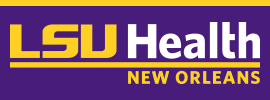Document Type
Article
Publication Date
3-7-2025
Publication Title
OTA International: The Open Access Journal of Orthopaedic Trauma
Abstract
Objectives: To evaluate rates of nonunion repair, osseous healing, and outcomes in femoral nonunions with contemporary healing. Design: Retrospective review. Setting: Five academic level 1 trauma centers. Patients/Participants: This study includes adult patients (age older than 18) seen at one of the participating institutions between 2012 and 2019 who sustained a femur fracture (OTA/AO 31, 32, 33) initially treated with intramedullary fixation that developed nonunion and were treated with exchange nailing for the index nonunion surgery. Seventy-nine patients with femoral nonunion met inclusion criteria. Intervention: Exchange nailing for treatment of femoral nonunion. Main Outcome Measurements: The primary outcome measure was radiographic osseous union. We further analyzed union rates by OTA/AO classification, nonunion type, implants used, graft used, time from the initial procedure, and infection status. Results: Seventy-nine patients met inclusion criteria. Rates of osseous union were similar by OTA/AO classification (P = 0.48), nonunion type (hypertrophic, oligotrophic, atrophic) (P = 0.52), implant/biologic used (P = 0.45), and time from the initial procedure until exchange nail procedure (P = 0.09). Forty-two patients had inflammatory laboratory markers (C-reactive protein, erythrocyte sedimentary rate) and cultures obtained during the first nonunion surgery with no significant differences in union (P = 0.29) based on laboratory and culture results. However, a considerable number of complications were encountered (n = 32; 41%). Common complications included reoperation (n = 30; 38%) secondary to recalcitrant nonunion, readmission, implant failure, and infection. Conclusions: This large, multicenter study with modern implants, instruments, and techniques for exchange nailing of femoral nonunions demonstrates high rates of reoperation (n = 30; 38%), but higher rates of osseous healing (n = 68; 86% healed) than previously reported data in the literature.
PubMed ID
40061869
Volume
8
Issue
2
Creative Commons License

This work is licensed under a Creative Commons Attribution-NonCommercial-No Derivative Works 4.0 International License.
Recommended Citation
Averkamp, Benjamin; Yu, Ziqing; Mastracci, Julia C.; Braswell, Matthew J.; Chen, Andrew T.; Lopas, Luke A.; Sharma, Ishani; Farooq, Hassan; Mir, Hassan; Rivera, Jessica; Seymour, Rachel B.; Hsu, Joseph R.; Trauma Collaborative, Evidence-based Musculoskeletal Injury &; Zura, Robert D.; Schatz, Marc; and al, et, "High rate of complications with exchange nailing for femoral nonunions" (2025). School of Medicine Faculty Publications. 3743.
https://digitalscholar.lsuhsc.edu/som_facpubs/3743
10.1097/OI9.0000000000000387
Included in
Orthopedics Commons, Surgery Commons, Surgical Procedures, Operative Commons, Wounds and Injuries Commons



Comments
See article for full author list